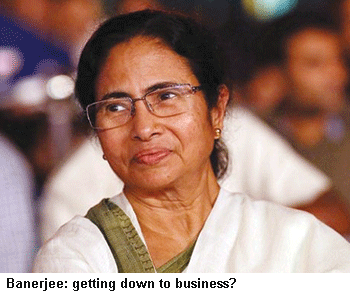 The west bengal government’s much-hyped education hub, which was announced in February 2015 and promised at least 30 educational institutes concentrated in Rajarhat Town on the eastern fringe of Kolkata, has started taking shape. The hub has been allotted 150 acres in the township to establish higher education campuses. Equipped with a football ground, sports academy, swimming pool, a 3,500 sq.ft food court, law institute and four postgraduate courses offered by St. Xavier’s University, the Rajarhat Education Township was inaugurated on July 8 this year.
The west bengal government’s much-hyped education hub, which was announced in February 2015 and promised at least 30 educational institutes concentrated in Rajarhat Town on the eastern fringe of Kolkata, has started taking shape. The hub has been allotted 150 acres in the township to establish higher education campuses. Equipped with a football ground, sports academy, swimming pool, a 3,500 sq.ft food court, law institute and four postgraduate courses offered by St. Xavier’s University, the Rajarhat Education Township was inaugurated on July 8 this year.
The latest initiative of the state government to develop this education township has been to issue a notice on September 27, announcing the upgradation of India’s oldest B-school, the Indian Institute of Social Welfare and Business Management (IISWBM estb. 1953) into a university which will set up its main campus in Rajarhat. The state government’s education ministry has already begun drafting a Bill, which has the full support of chief minister Mamata Banerjee as well as education minister Partha Chatterjee, an IISWBM alumnus.
The institute, which has a long list of illustrious alumni including management guru Sumantra Ghoshal, founding dean of the Indian School of Business, Hyderabad, Lakshmi Niwas Mittal, chairman and CEO of the UK-based Arcelor Mittal, Bhaskar Das, executive director of the Times of India, Sudhir Jalan, president of the All India Management Association and C.V. Chandrasekharan, managing director of Balmer Lawrie among others, plans to establish two new campuses at Rajarhat and Salt Lake. IISWBM’s Rajarhat campus will be spread over 3 acres while the Salt Lake campus will rise vertically over one acre. It’s been a year since work started and the foundation laid.
The private sector IISWBM, established by Calcutta University on April 25, 1953, will begin its new journey from the start of the academic year 2018-2019. It was the very first B-school in India and south-east Asia, and was constituted by a resolution passed by the senate of the University of Calcutta. This was the culmination of a joint initiative supported by the University of Calcutta, the government of West Bengal, the Central government together with captains of Indian industry. The suggestion to confer university status was made by the chief minister in early August at the inauguration of St. Xavier’s University in Rajarhat.
According to an education ministry spokesperson, if and when IISWBM gathers the several private B-schools in West Bengal under its umbrella, it could become the country’s first business management university. At the moment, the main source of revenue for the institute is tuition fees of its 220 students. It is living a hand-to-mouth existence. However, government grants and corporate research funding will be more forthcoming once it is upgraded into a university. “Collaborations with foreign universities and research projects are being stalled since IISWBM is only a private autonomous body. We do get paltry sums from the state government but that’s not sufficient for expansion,” says Dr. Soma Bandopadhyay, an alumna of Calcutta University who signed up with IISWBM in 2016 and teaches financial management currently.
With the prospect of additional funding looking bright once the institute is accorded university status, what remains to be done is modernising the curriculum. According to Prof. Suman Mukhopadhyay, noted educationist and director general of the Bhawanipur Education Society, Kolkata, the general complaint of industry is that the syllabuses/curriculums of West Bengal’s 22 government and 215 private business management institutes are outdated and out of sync with industry requirements. “The issue of education delivery also needs to be sorted. There should be better teachers and better systems in place, for attracting bright students to B-schools of the state,” says Mukhopadhyay.
Academics in West Bengal (pop. 91 million) welcome the belated attention the chief minister and Trinamool Congress (TMC) party supremo Mamata Banerjee is paying to the state’s languishing education sector after the TMC was returned to power for a second term last year following the destruction of West Bengal’s education system by the CPM-led Left Front government during its uninterrupted 34 years (1977-2011) rule.
After an initial period of chaos with a complete freeze on teacher recruitment, incidents of rampant campus violence, mass copying and recruitment test scandals during TMC’s first five years of office, the government seems to have begun to introduce the much-awaited poribartan (‘change’) in the state’s languishing education system. After clearing the long stalled teacher recruitment process last year, the government is now taking initiatives towards improving higher education. Five private universities, including St. Xavier’s, Amity and IISWBM have been legislated in addition to the new education hub in Rajarhat. Finally, higher education in West Bengal — renowned for its great institutions of higher learning — until the communists advent in 1977, may be getting down to business.
Baishali Mukherjee (Kolkata)